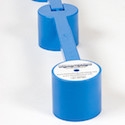 There are many different ways to go about positioning your offense when attacking the opposing zone. Two things you’ll always want to remember are, be available/open for a pass and remember that if you’re not getting passed to your teammate probably needs help!
There are many different ways to go about positioning your offense when attacking the opposing zone. Two things you’ll always want to remember are, be available/open for a pass and remember that if you’re not getting passed to your teammate probably needs help!
When attacking the offensive zone, the ultimate goal is to keep the puck in the zone and eventually get it in the net.
Defenders
A good way to go about positioning is to place your two defensemen right at the point (the top of the zone along the blue line). The defensemen need to stay at the point in order to not only prevent the other team from passing it up the boards if they end up stealing the puck, but they will also be there to help move the puck around, and if allowed, rip a slap shot. If a defenseman ends up taking a shot, the forwards need to make sure some one is there to either screen the goalie or pick up the rebound and make an easy goal.
Occasionally you will have a forward on the other team who can skate fast and/or cheats up past the blue line, waiting for a pass. If this is the case you might have to have your middle defender hang back a bit to prevent an easy breakout.
Objectives
- Keep the puck in the offensive zone
- Set up a forward for a goal.
- Blast a low slapshot if the coast is clear
Forwards
The center will often be the one to bring the puck down and he needs to have options. One strategy might be to have the center skate the puck into the zone. If he has an open shot, he should take it, if not, you have some options. You can have your weak side winger skate hard to the crease/slot in case to receive a pass or deflect a shot. The strong side winger will want to be hanging behind the center around the hash mark. This way the center has the option to take the puck down wide and low.
Another option would be for the weak side winger to skate hard to get behind the goal while the center takes it down the slot. In this situation, the strong side winger will want to hang back between the slot and boards and should stay around the top of the face off circle.
If the center decides to pass to the strong side, his winger is right there. If he decides to send it to his weak side winger, he will be down there waiting. Once any pass to a forward is made, the player making the pass should trail the puck and look for a pass. If one of the forwards needs help, their fellow winger or center will be close enough to cycle the puck and eventually make a play.
If forwards are having trouble penetrating, they can send the puck back up to the point. For us Americans who are used to playing sports like football, it can feel unnatural to make anything but forward progress. I once heard from another player that hockey is all about creating time and space. Sometimes you have to kick it back to achieve those elements.
Objectives
- One of you should be in the slot whenever possible
- Follow each pass you make to another forward to keep the puck moving
- Pass back up to your defenders if you don’t have anything going
- Maintain a triangle formation with the other forwards to create passing lanes
Variations
If, for whatever reason, the defenseman decides to take the puck to the net, make sure a forward is there to cover him. The defenseman should also align themselves on the strong side of the zone. For example, if the puck is on the left side of the zone, the right defense-men will want to be positioned in the slot. However, the left defenseman will want to be positioned as shown above.
This is similar for any of the forwards. If the center follows the puck to the right of the net, the left winger should assume his spot in the slot. If the center no longer needs help, the right winger should go to the left winger’s previous position.
Final Thoughts
Of course all that has been said is in an ideal situation where you can set up perfectly and we all know this usually isn’t the case. One of the wingers may be taking the puck down instead of the center or even one of the defenseman might be taking it down. As long as your team remembers to cover any unattended position, they should be fine.
Remember, the longer you keep the puck in the the other team’s zone, the more tired and frustrated they will get. This will make it A LOT easier to get a shot on the net which will lead to your team scoring more goals!
Related Posts
The Six Laws of Defensive Positioning
The Do’s and Don’ts of Hockey Breakouts
Tags: offense, positioning






